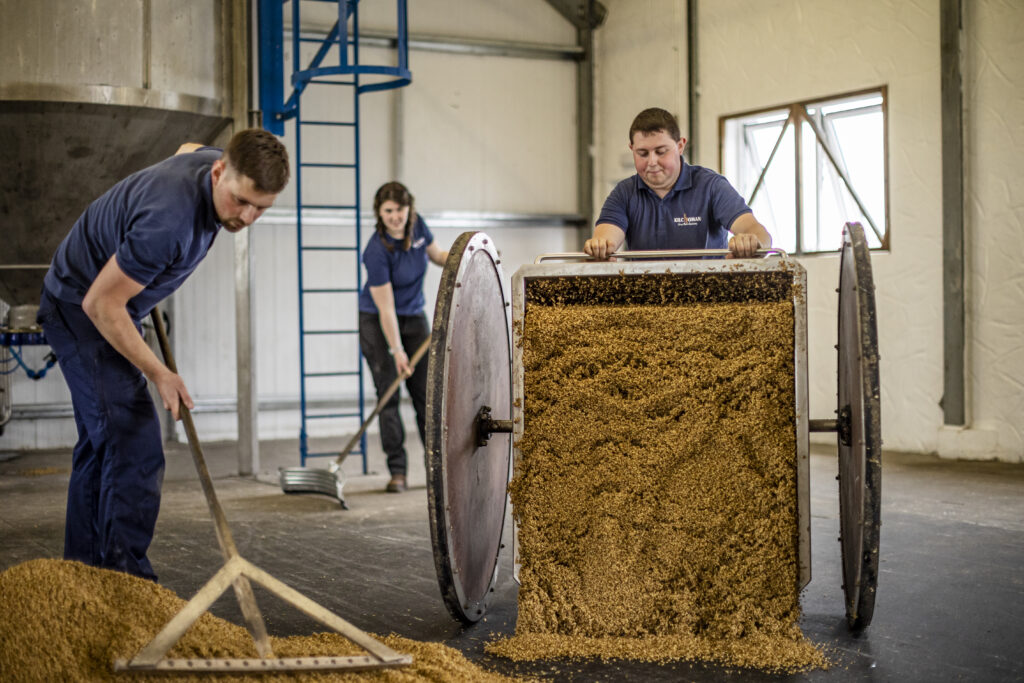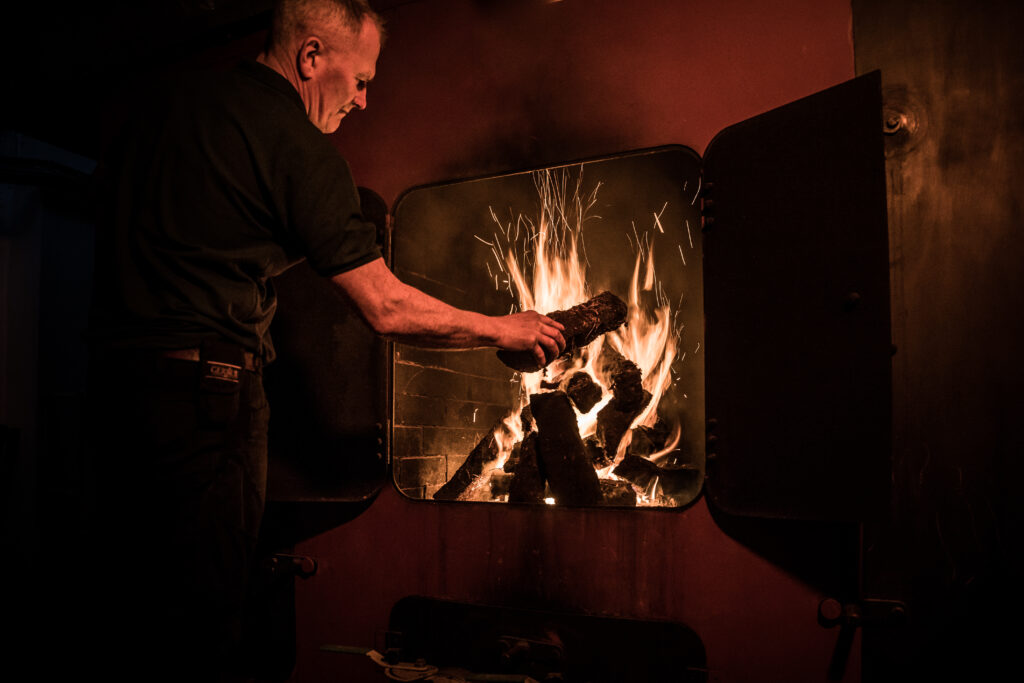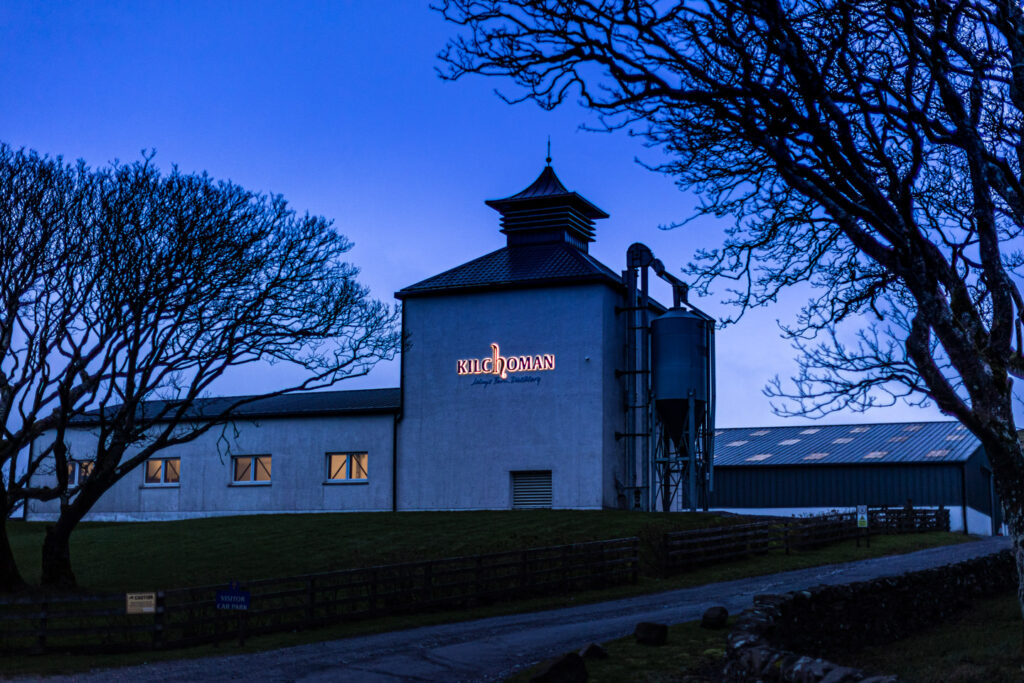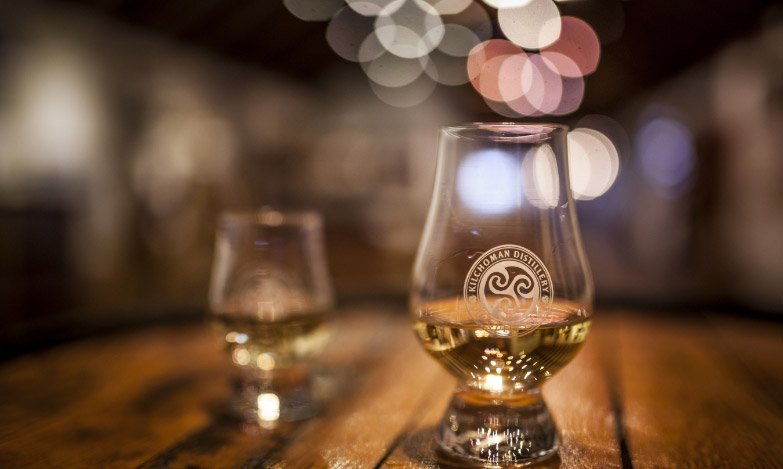Featured
Behind the Scenes at Kilchoman: Malting
March 14, 2024Malting is arguably one of the most important stages in the whisky-making process. The rest of production relies upon it, and if done incorrectly, it can have a major ripple effect throughout the process. This is why most distilleries outsource this to a commercial malting company.
At Kilchoman, we oversee total production for our 100% Islay range of whiskies, from growing our barley to bottling our whisky, and are one of only a handful of distilleries in Scotland that still practice the traditional art of malting barley. The malting process is split into three key stages – steeping, germination, and kilning.
Once our barley has been harvested, we store it at an ambient temperature to prevent it from germinating before we want it to. We then take 2-4 tons from the shed to our malt floor, where it will be put into our steep tank (steep is a Scottish word for soak), water is then added to wake all the grains back up again. This process mimics what would happen in the fields in Springtime. The barley would be sown, and rainwater would fall on it. Thus, kickstarting the germination process.
We steep the barley for 2 days while a soaking cycle takes place to allow all the natural starches and enzymes to form. These are the two essential ingredients required to create sugar later down the line. We consistently track the temperature, moisture content, and growth over this period. The outside environment can affect this process, so we must monitor it closely and act accordingly.

The next stage is germination, beginning the process of converting starch into fermentable sugars. We remove our barley from the steep tank and spread it on our malt floor by hand. Our malt floor is traditional, meaning it is not heated, and the room is not temperature or climate-controlled. It becomes hard to describe this process using exact numbers as this process very heavily depends on Mother Nature – on Islay she is often not very kind to us!
Our ‘green malt’ (the term used to describe barley at this stage) is spread out on the floor and will stay there for 4-5 days, where it will be turned every 2-4 hours while also having its moisture content and temperature checked. At this stage, we are trying to keep the barley germinating (starting to grow) as consistently as possible, again mimicking the ideal growing conditions it would experience in the field. We rely heavily on our production team’s knowledge to track the changes caused by our ever-changing Islay climate. It is a very difficult skill to master!
Once we are happy with how our grains have germinated, we move them to the kiln for the final stage of the process.

Kilning is the final stage of a three-step process. At this point, the grain is dried to stop it from germinating, as we do not want to lose any of the hard work we have put in over the last week cultivating the fermentable sugars. Historically in Scotland – and especially on Islay. Peat was used at this stage due to its abundance, and it is this that gives Islay whiskies their iconic flavour.
Our barely will sit above a lit peat fire for 10-15 hours to obtain a peating level of 20 ppm (our peating level for all 100% Islay expressions).
We used peat in Scotland to dry the grain and the smoky flavour was just a happy accident. Nowadays, the peat will be used more to give flavour, and we must use a fan heater to dry the grain after it has been smoked – this usually takes a further 20-30 hours. This ensures we can halt the germination process as accurately as possible without affecting the peated flavour. Regardless, the barley still has to be dried to complete the malting process.

At Kilchoman, traditional floor malting is something we are very proud of being able to do. Despite malting companies being able to produce very large amounts efficiently and consistently, there is something beautiful about standing amongst the barley on the floor, moving it by hand and watching over it while it germinates. All being done by people who have taken the time and effort in finding the best way to work with it instead of trying to tell it what to do. An authentic traditional experience and an essential part of our farm distillery.
For a more in depth article on traditional floor malting click here
For more information on peat click here
READ NEXT
Featured
Machir Bay Cask Strength 2025
Three years since our last Machir Bay Cask Strength release, the 2025 edition is here, and it delivers in every sense. “One of my favourite whiskies we have released, it has everything I love about Kilchoman spirit, with a little extra punch. There will be a lot of happy Kilchoman…
November 4, 2025

